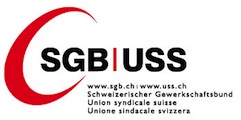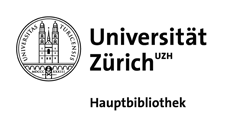Publications des institutions partenaires
Philip Ulrich Sauré and Hosny Zoabi: Retirement Age across Countries: The Role of Occupations
Cross-country variation in average retirement age is usually attributed to institutional differences that affect individuals' incentives to retire. We suggest a different approach. Since workers in different occupations naturally retire at different ages, the composition of occupations within an economy matters for its average retirement age. Using U.S. data we infer the average...
Institution partenaire
English / 27/04/2016
Martin Brown, Steven Ongena and Pinar Yesin: Information Asymmetry and Foreign Currency Borrowing by Small Firms
We model the choice of loan currency in a framework which features a trade-off between lower cost of debt and the risk of firm-level distress costs. Under perfect information, if foreign currency funds come at a lower interest rate, all foreign currency earners as well as those local currency earners with high revenues and/or low distress costs choose foreign currency loans. When the...
Institution partenaire
English / 27/04/2016
Thomas Nitschka: Banking sectors' international interconnectedness: Implications for consumption risk sharing in Europe
Cross-border asset and liability holdings allow countries to insulate their consumption streams from idiosyncratic output shocks, i.e. consumption risk sharing. By contrast, banks' international interconnectedness spread the U.S. subprime mortgage crisis to various economies with adverse macroeconomic consequences. This paper evaluates the partial impact of banks' cross-border links...
Institution partenaire
English / 27/04/2016
Matteo Bonato, Massimiliano Caporin and Angelo Ranaldo: Risk spillovers in international equity portfolios
We define risk spillover as the dependence of a given asset variance on the past covariances and variances of other assets. Building on this idea, we propose the use of a highly flexible and tractable model to forecast the volatility of an international equity portfolio. According to the risk management strategy proposed, portfolio risk is seen as a specific combination of daily...
Institution partenaire
English / 27/04/2016
Signe Krogstrup, Samuel Reynard and Barbara Sutter: Liquidity Effects of Quantitative Easing on Long-Term Interest Rates
This paper argues that the expansion in reserves following recent quantitative easing programs of the Federal Reserve may have affected long-term interest rates through liquidity effects. The data lends some support for liquidity effects, in that reserves were negatively correlated with long-term yields at the zero lower bound. Estimates suggest that between January 2009 and 2011, 10...
Institution partenaire
English / 27/04/2016
Raphael Anton Auer: Exchange Rate Pass-Through, Domestic Competition, and Inflation: Evidence from the 2005/08 Revaluation of the Renminbi
This paper quantifies the effect of the government-controlled appreciation of the Chinese renminbi (RMB) vis-à-vis the USD from 2005 to 2008 on the prices charged by US producers. As the RMB during that time was pegged to a basket of currencies, the empirical strategy must account for the fact that the currencies included in the basket may have directly affected US prices. Thus, the...
Institution partenaire
English / 27/04/2016
Sébastien Philippe Kraenzlin and Benedikt von Scarpatetti: Bargaining Power in the Repo Market
In this paper, we analyze the price setting behavior of banks in the Swiss franc repo market by means of network topology concepts and measures. The sample ranges from October 1999 to December 2009. Hence, it covers a large part of the money market turmoil that started in August 2007. Among others, we find evidence that market participants use their bargaining power as well as...
Institution partenaire
English / 27/04/2016
Sylvia Kaufmann: K-state switching models with endogenous transition distributions
Two Bayesian sampling schemes are outlined to estimate a K-state Markov switching model with time-varying transition probabilities. The multinomial logit model for the transition probabilities is alternatively expressed as a random utility model and as a difference random utility model. The estimation uses data augmentation and both sampling schemes can be based on Gibbs sampling....
Institution partenaire
English / 27/04/2016
Jürg Mägerle and Thomas Nellen: Interoperability between central counterparties
In reaction to recent requests for interoperability between central counterparties of European stock markets, regulators have issued new guidelines to contain systemic risk. Our analysis confirms that the currently applied cross-CCP risk management model can be a source of contagion, particularly if applied in multilateral frameworks. While regulators' new guidelines eliminate...
Institution partenaire
English / 27/04/2016
Massimiliano Caporin and Angelo Ranaldo: On the Predictability of Stock Prices: a Case for High and Low Prices
Contrary to the common wisdom that asset prices are hardly possible to forecast, we show that high and low prices of equity shares are largely predictable. We propose to model them using a simple implementation of a fractional vector autoregressive model with error correction (FVECM). This model captures two fundamental patterns of high and low prices: their cointegrating...
Institution partenaire
English / 27/04/2016
Raphael Anton Auer and Philip Ulrich Sauré: Spatial Competition in Quality, Demand-Induced Innovation, and Schumpeterian Growth
We develop a general equilibrium model of vertical innovation in which multiple firms compete monopolistically in the quality space. The model features many firms, each of which holds the monopoly to produce a unique quality level of an otherwise homogenous good, and consumers who are heterogeneous in their valuation of the good's quality. If the marginal cost of production is convex...
Institution partenaire
English / 27/04/2016
Raphael Anton Auer, Kathrin Degen and Andreas M. Fischer: Low-Wage Import Competition, Inflationary Pressure,and Industry Dynamics in Europe
What is the impact of import competition from low-wage countries (LWCs) on inflationary pressure in Europe? This paper examines whether labor-intensive exports from emerging Europe, Asia, and other global regions have a uniform impact on producer prices in Germany, France, Italy, Sweden, and the United Kingdom. In a panel covering 110 (4-digit) NACE industries from 1995 to 2008,...
Institution partenaire
English / 27/04/2016
Iva Cecchin: Mortgage Rate Pass-Through in Switzerland
This paper investigates the speed and completeness of the pass-through from market rates to mortgage rates in Switzerland. The pass-through dynamics are studied under a marginal funding cost perspective. By choosing the appropriate benchmark rates, this study takes into account banks' forecasts of the evolution of their funding costs. It is found that the passthrough of rates of...
Institution partenaire
English / 27/04/2016
Daniel Kaufmann and Sarah Lein: Sectoral Inflation Dynamics, Idiosyncratic Shocks and Monetary Policy
This paper disentangles fluctuations in disaggregate prices into macroeconomic and idiosyncratic components using a factor-augmented vector autoregression (FAVAR) in order to shed light on sectoral inflation dynamics in Switzerland. We find that disaggregated prices react only slowly to monetary policy and other macroeconomic shocks, but relatively quickly to idiosyncratic shocks. We...
Institution partenaire
English / 27/04/2016
Pamela Hall: Is there any evidence of a Greenspan put?
Central banks have won in credibility as from the mid-eighties by keeping inflation under control. However, confidence in low inflation might have encouraged agents to excessive risk-taking, leading asset prices to rise. Moreover, the belief in a Federal Reserve guarantee against a sharp market decline spread across US markets as from the nineties. This belief, commonly referred to...
Institution partenaire
English / 27/04/2016
Basil Guggenheim, Sébastien Philippe Kraenzlin and Silvio Schumacher: Exploring an uncharted market: Evidence on the unsecured Swiss franc money market
To date, various central banks have lacked detailed statistical evidence on developments in the unsecured interbank money market. Furfine (1999) introduced the idea of calculating unsecured overnight interbank lending by using data of a RTGS system. Based on data from the Swiss payment system (SIC) we developed an algorithm to identify unsecured interbank loans in Swiss francs. In...
Institution partenaire
English / 27/04/2016
Francis Breedon and Angelo Ranaldo: Intraday patterns in FX returns and order flow
Using 10 years of high-frequency foreign exchange data, we present evidence of time-of-day effects in foreign exchange returns through a significant tendency for currencies to depreciate during local trading hours. We confirm this pattern across a range of currencies and find that, in the case of EUR/USD, it can form a simple, profitable trading strategy. We also find that this...
Institution partenaire
English / 27/04/2016
Victoria Galsband and Thomas Nitschka: Foreign currency returns and systematic risks
The decomposition of the market return into its cash-flow and discount-rate news driven components reveals that excess returns on low forward discount currency portfolios load positively on "good" news about the stock market's discount rates while high forward discount currencies load negatively on this news. Average currency portfolio returns are hence explained by different...
Institution partenaire
English / 27/04/2016
Martin Brown, Karolin Kirschenmann and Steven Ongena: Foreign Currency Loans - Demand or Supply Driven?
Motivated by concerns over foreign currency exposures of banks in Emerging Europe, we examine the currency denomination of business loans made in Bulgaria during the period 2003-2007. We analyze a unique dataset including information on the requested and granted currency for more than hundred thousand loans granted by one bank to sixty thousand different firms. This data set allows...
Institution partenaire
English / 27/04/2016
Thorsten Beck and Martin Brown: Which Households Use Banks? Evidence from the Transition Economies
This paper uses survey data for 29,000 households from 29 transition economies to explore how the use of banking services is related to household characteristics, bank ownership structure and the development of the financial infrastructure. At the household level we find that the holding of a bank account or bank card increases with income, wealth and education in most countries and...
Institution partenaire
English / 27/04/2016
Pages
Le portail de l'information économique suisse
© 2016 Infonet Economy












